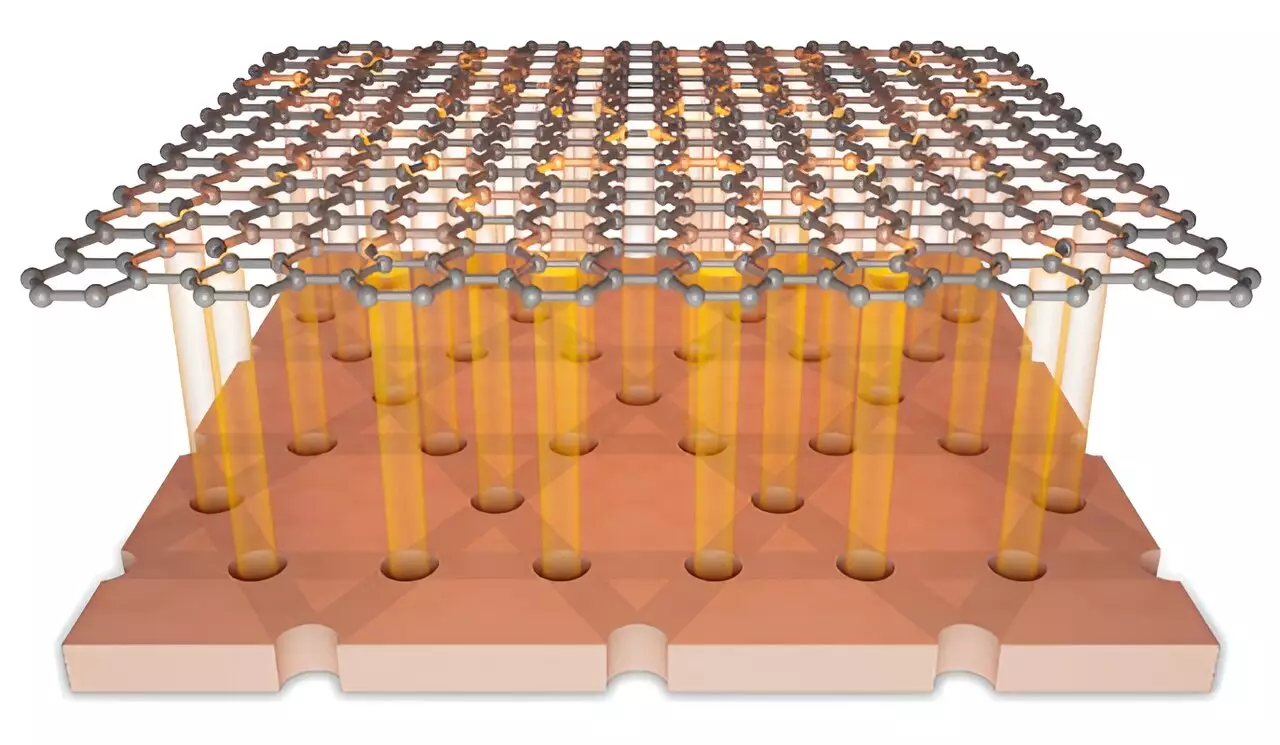Recent breakthroughs in material science have led researchers to explore innovative techniques for tuning electronic properties in two-dimensional materials, particularly graphene. A new study published in *Physical Review Letters* presents a transformative method that employs artificial superlattice fields to selectively manipulate electronic bands within graphene. This groundbreaking approach, spearheaded by a research team led by Prof. Zeng Changgan from the University of Science and Technology of China (USTC), promises to overcome the limitations of conventional band engineering techniques.
Traditional methodologies in band engineering, including heterostructures and interfacial strain, have often proven inadequate due to their inflexibility and limited capacity for real-time adjustments. Often, these approaches fail to facilitate continuous control over the engineered band structures, which is crucial for tailoring materials to specific applications. In a world where rapid adjustments to material properties can dramatically change device performance, these constraints signal a need for more adaptable solutions. The rise of van der Waals (vdW) materials such as graphene has opened numerous possibilities, yet the complexity of manipulating electronic properties remains a significant hurdle.
The research presented in the article introduces a pioneering method using an artificial kagome superlattice, dramatically enhancing the ability to control Dirac bands in graphene effectively. With a lattice period of 80 nm, this design allows for the folding and compression of high-energy bands into a low-energy regime, making them more conducive to experimental observation and manipulation. This novel framework introduces not just a new spatial pattern, but also a method of creating a tunable energy landscape, offering extensive possibilities for research and practical applications in electronic devices.
A significant advancement of this research lies in the introduction of a high-order potential located within the kagome superlattice. This high-order potential enables researchers to finely tune the band structures through a variety of contributions, allowing for a dispersion-selective modulation that was previously unattainable. The researchers meticulously utilized standard van der Waals assembly techniques coupled with electron beam lithography to fabricate the kagome lattice device. This combination of techniques results in a sophisticated local gating system for graphene, enabling unprecedented control over carrier density and the strength of the artificial potential.
Through their experimentally rigorous approach, the researchers demonstrated the ability to observe and manipulate spectral weight redistribution among multiple Dirac peaks. Furthermore, their investigations revealed that the introduction of a magnetic field can effectively diminish the impact of the superlattice on the band structure, thus catalyzing a return to the intrinsic characteristics of the Dirac bands. This finding offers an additional mechanism for modulating electronic properties, paving the way for a deeper understanding of the underlying physics.
The implications of this research extend far beyond the confines of graphene band tuning. The methodology set forth promises to inspire the design of novel materials with tailored functionalities, potentially leading to groundbreaking physical phenomena and advancements in electronic devices. As the scientific community continues to explore the vast possibilities of two-dimensional materials, this innovative approach to band structure engineering stands as a significant milestone that can unlock new avenues for future investigations.
In sum, the research team led by Prof. Zeng Changgan has made a commendable leap forward in the field of electronic band engineering through the introduction of an artificial kagome superlattice. This method not only addresses the limitations of conventional techniques but also broadens the horizons for future research into the electronic properties of materials. With the potential for unprecedented control over band structures, the implications of this study may usher in a new era of material science, ultimately leading to the design of next-generation electronic devices and innovative discoveries in physics. The collaborative effort, including contributions from esteemed researchers like Prof. Sheng Junyuan and Prof. Francisco Guinea, further highlights the importance of interdisciplinary cooperation in achieving breakthrough innovations in science.

